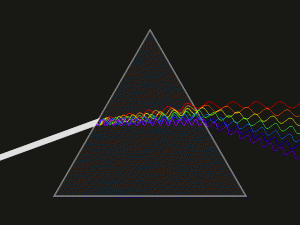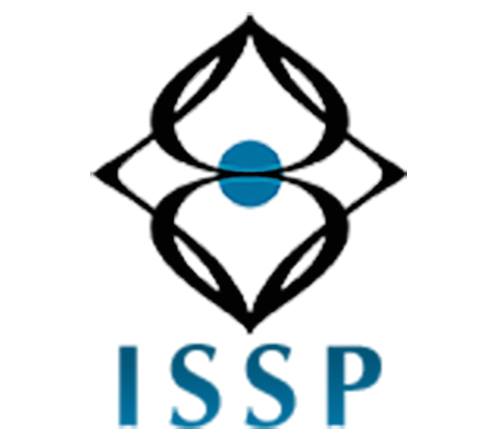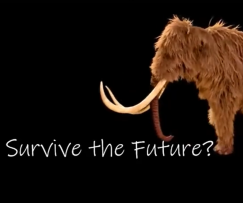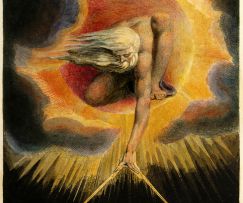Spiritual psychology differs from conventional psychology in that it recognizes not only the healing power of spiritual aspects of experience, but also the spiritual nature of profane experience.
“The experience of cosmic unity – being one with the universe – is an extremely powerful healing mechanism. There is nothing in psychology and psychiatry that has come close to it. Unfortunately, we would presently diagnosis that as a psychosis and tell people to stop it. We are interfering with a very powerful self-healing process.”
Dr. Stanislav Grof
Classical psychology and psychiatry tends to relate to the psyche as an individual and separate existential entity, not as an interdependent part of a collective psyche. This can have a serious whiplash in affirming beliefs in separation, isolation, and all the attending sufferings of despair arising from what is fundamentally an illogical and unscientific belief.
 The prevalence of healing scenarios where individuals across countries and generations have been able to move through changes and into a happier and more fulfilled life through releasing that belief in individual separation were what gave fire to the work of C.G. Jung and has birthed new schools of psychological thought, including transpersonal psychology.
The prevalence of healing scenarios where individuals across countries and generations have been able to move through changes and into a happier and more fulfilled life through releasing that belief in individual separation were what gave fire to the work of C.G. Jung and has birthed new schools of psychological thought, including transpersonal psychology.
The typical psychological paradigm still taught today is that this individual, separate psyche is born at the moment the baby takes its first breath. No experience of the birth process or life prior to birth is admitted. To Sigmund Freud, a new-born baby is a tabula-rasa, a slate clean of any prior experience. Despite scientific evidence that even though a sea slug has been proven to have the mechanisms of memory, impressions of pre-birth and birth experience in humans cannot be possible.
The separate psyche, according to classical psychology, begins with physical birth and ends with physical death. It is bounded in time and restricted in skin to the individual’s physical body. This preconception leaves many in processes of grief, or struggling with traumatic states, without resources. It rejects the psychic aspects of ourselves, as well as the empathic. It assumes a philosophical certainty over life and death and then applies this as a therapeutic model.
Yet how many have directly experienced the immediate healing impact of awakening in the present moment, beyond the restraints of past and future? How many have enjoyed altered states of consciousness through all kinds of circumstances that have changed their lives? How much anxiety and physical and mental stress is generated by this belief that we are caught, in an absolute sense, in time and space, relying on bad past experiences in order to fear the future?
The assumption of individual separation also separates the therapist from the client, setting up a power structure in which the client (who is not OK) is treated for their (clearly separate) suffering by the therapist (who is A-OK).
While most of this therapeutic contact is helpful, due to the client’s willingness to let down the barriers of isolation around the separate self, there is a serious limitation on the healing potential of the shared awareness of client and therapist together in working with energetic forms that emerge in the living, present moment. Also, a growing dependency can be witnessed within the therapist on “crazy” people to affirm his or her separate ‘sanity’. The stress and despair of separation and unhealthy identification can set in, even in a therapeutic setting.
In the emphasis on the separate psyche, classical psychology negates the energetic impact of feelings and emotions in the environment. It treats emotions and feelings as insubstantial in the sense that if the client stops paying attention to them after speaking them out, they will go away. It also treats this living, energetic dimension as personal, denying the transpersonal perspective where the anger experienced by one individual, for example, could be inseparable from the anger that is resonating through his or her environment. By personalizing a sentient process, this approach isolates the individual, possibly adding shame, guilt or loneliness to the suffering. It also reveals a belief system in which emotion defines the individual, which further divides the individual from the powerful healing resources on the inside, such as life, consciousness, or inherent peace.
In addition, today’s widespread psychological paradigm excludes the archetypal forms researched by C.G.Jung; the healing potential of releasing energy trapped in past life experiences; and the now scientifically validated evidence of trauma inherited not just through conditioning, but through genetics. From the fundamental belief in the separation of the individual psyche from the whole, multiple healing resources are shut down, and subtle condemnation sets in.
According to pioneer of Transpersonal Psychology Dr. Stanislav Grof, the phenomena of the personal, remembered story is just scratching the surface of what it is to be human.
“We thought that if we just clean up a little of what happened in our childhood, then everything will be fine,” he said at a 2015 lecture at the Science & Nonduality Conference (SAND) in California. “But the playground got bigger. The playground is now the universe. The experience of cosmic unity – being one with the universe – is an extremely powerful healing mechanism. There is nothing in psychology and psychiatry that has come close to it. Unfortunately, we would presently diagnosis that as a psychosis and tell people to stop it. We are interfering with a very powerful self-healing process.”
Grof talks of intrinsic spiritual sources within the psyche. These sources, he says, have
“a powerful self-healing potential. If you go into a non-ordinary state of consciousness, it mobilizes an inner radar that will find contents in the body with a strong emotional charge. When these are in the right connection to the threshold of consciousness, we can use this energy for processing. There is a radar. We don’t have to make the decision. We become co-adventures, and we have to trust that there is a self-healing intelligence that is far from anything we can come up with in our different schools of psychotherapy.”
Spiritual psychology also differs from conventional schools of psychology in its emphasis on the energetic presence of feelings and emotions. These are observed as energetic phenomena playing out at a causal layer to thoughts and beliefs. To put it simply, when there is angry energy, we have angry thoughts. Feelings of love and well-being, on the other hand, birth loving thoughts. As feelings and emotions are seen as energetic forms, it introduces skills of non-verbal communication, in which energetic correspondence or transmission can reach an authenticity where words and thoughts fail.
As such, words such as ‘sadness’ (as an example) are not labels, but invitations to a certain energetic frequency. We all recognize the energy of sadness. It doesn’t need a label except as a contractual pointer towards that energy. Yet without the feeling of sadness, the word would be senseless. The therapeutic priority in spiritual psychology is in allowing the resonance of sadness – the feeling quality of it – through all layers of reception and expression, which can include voice, feeling and touch. In this way, sadness (in this case) can come to life, rather than solidifying into depression.
Spiritual psychology has a foundational trust in the intelligence of life as the greatest healer, in its natural tendency towards harmony and the resonance found throughout the physical universe. It trusts the ‘inner radar’.
Too often, conventional psychology tends to move from a premise that life is a kind of chaos that needs to be mastered or controlled through mental instruction or correct thought patterns. This finds expression in psychiatry and the use of drugs to control behaviour and to delineate experience.
While a particular suffering or affliction can be accentuated with a remembered story, the story itself is not seen as the definitive origin of the story, but rather one symptom of a thread of learning that continues until the contracted energy is released and the deeper cause of the affliction realized.
Is a thought an expression out of the silence, or a repression of the silence? The first – the thought which gives form to the unique atmosphere of silence at any given moment – will lead to greater self-understanding and freedom. The second will lead to more thoughts and increasing confusion.
In spiritual psychology, the conventional boundaries of the separate self are no longer empowered as absolute.
Instead, it allows for collective mind, consciousness and shared awareness. Seen through the eyes of a spiritual psychologist, the individual is not a clearly defined, separate entity, but a transforming channel of a variety of energies and healing potentials. As such, neither suffering nor salvation are exclusively private affairs, but part of a much wider story of inter-being.
To summarise, spiritual psychology:
- Is transpersonal, recognizing the transient and impermanent nature of individual form.
- Arises out of the assumption that life or consciousness has a healing intelligence that surpasses mental construct.
- Allows that the cause of suffering or affliction is at root ‘spiritual’ in nature, as is the healing needed.
- Recognizes transpersonal and generational events as coexisting players in a personal affliction.
- Prioritizes the energetic forms and contractions of feeling and emotion at a causal layer to thought forms and mental agendas.
- Views consciousness as independent of the individual brain, rather than as created by the brain.












